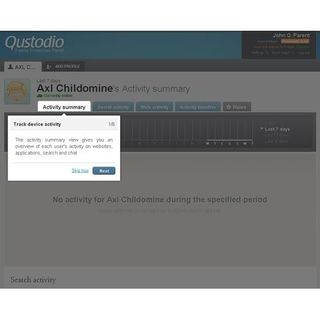

Mobile DevicesĪs good as everything is on the desktop, the control app quickly fails like many other parental control apps do, and this is it that it is nearly impossible to control anything on the device unless it is done inside the Qustodio app or web browser. There is also a timeline presented which makes viewing activity much more accessible than an extensive list of text. Once this stealth monitoring phase is complete, parents can then set up the application restrictions for time limits, or if playing games, they can set screen time.Īll this is done from an easy to navigate screen with toggle buttons and a time scheduler at the side. This builds up a profile, and you can see what a child uses and for how long. The one area which is very different to something like Net Nanny is the Qustodio app encourages your child to carry on as usual instead of having to set restrictions ahead of time. The Qustodio family dashboard is well laid out and easy to read. At this point, a request is made to add the app, and if this is denied, a child is unable to access their social media account. Rather than needing to know a child’s FB password, Qustodio integrates into the already running apps. The Qustodio app carries this through to its social media monitoring when setting up an FB account to monitor. It also upgraded the account to premium from the free which gives a 3-day free trial before any payment details are required.ĭuring the installation process, parents have the option to hide the app on that PC, this prevents anyone from seeing it running on their profile. Setup is straightforward compared to other parental control software, and one thing it did during installation on Windows 10 was to direct the browser to the profile setup. Reporting – 30-day archive of device usage reports.

Can read texts, and create a blocked list. Text monitoring and blocking – reports on who children text the most.

Internet Safety for Kids (A Parent’s Guide).


 0 kommentar(er)
0 kommentar(er)
